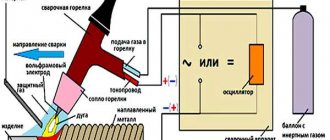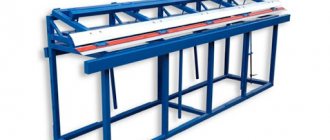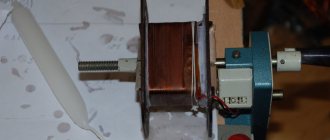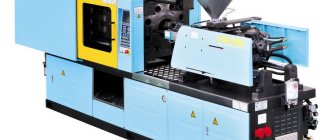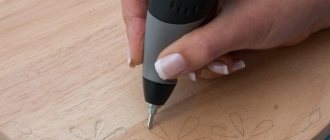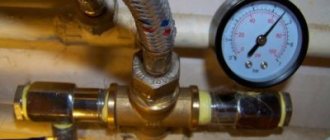Even many experienced locksmiths have no idea what a clamp is, not to mention ordinary people. And this tool can help you out a lot when laying a home pipeline. We will talk about how he can do this in this article.
Pipe clamp 1-1 2-1/4-3/8-3/4 with ratchet and in a plastic container
Purpose of the clamp
The installation of most pipelines requires threading, which allows you to connect different parts of the pipe. The thread provides a reliable and high-quality connection, so this type of connection does not lose its relevance over the years.
However, this rule does not apply to all situations. For example, polyethylene pipes are connected with special compression fittings, while polypropylene pipes are completely welded. Such connection methods have long proven themselves to be the best.
But, despite the simplicity and convenience, even such good methods of connecting pipes have their drawbacks, and quite serious ones:
- Fear of high temperatures . The maximum temperature at which polypropylene and metal-plastic pipes can operate is 95 degrees Celsius. Of course, on paper this standard exists and can even be observed, but there are often cases when hotter liquid is run through the pipes - for example, when heating houses in very cold winters. As a result of such an impact, the pipe is destroyed, with all the ensuing consequences. What can we say about polyethylene pipes, which begin to deform as soon as the temperature reaches 40 degrees.
- Low mechanical strength . When laying plastic pipes, you need to take into account their ability to withstand physical stress. For example, for installing a pipeline under a road or in rooms with high traffic, plastic products are not suitable at all - they are very easy to damage even by accidental impact.
As a result, we can come to the conclusion that in certain situations only metal pipes can be used, and they must be protected from corrosion.
Sealed connection of metal pipes is possible only using two methods:
- Welding;
- Threaded connection.
Welding is a good option, but not always suitable. One reason is that welding damages the zinc layer of the pipe, causing it to immediately become susceptible to corrosion. As a result, only the thread remains, which is devoid of this drawback.
Grooving machine
The configuration is possible in different modifications, it all depends on the manufacturer.
However, the essence of all machines is the same - they are used to cut threads on an industrial scale. The advantages include: There is a function for programming diameter and pitch parameters with automatic reverse activation.
There is a chip removal mode. The kit includes a set of cartridges. Setting the speed of the rotating mechanism. Great time savings for the process. Full use of the machine's capabilities. Increased wear resistance. Compressing the material with a knurling roller ensures a clean surface. Increased strength by 10-30 percent compared to mechanical processing.
Threading methods
There are several ways to cut pipe threads, including:
- Cutting on a lathe;
- Die cutting;
- Cutting with a pipe clamp.
Everything is clear with the machine - the pipe is inserted into the spindle, fixed, and with the help of a cutting tool, everything unnecessary is removed. Next, the cutter is changed, the pitch and depth of the pipe thread is selected - and this is where the work is successfully completed, after which the pipe can be used in any pipeline.
However, in theory, all this looks good, but in practice, a lathe is a tool that is not available everywhere, and you also need to be able to work with it. As a result, all that remains is a hand-held tool for cutting threads on pipes - a die or pipe clamp.
It is also worth mentioning that to cut the pipe you will also need a regular tool. Any device will do - a hand turbine, a pipe cutter or a hacksaw.
What is a thread and why is it needed?
Threading is one of the most popular types of fastening parts or mounting structures. It is used to connect several parts, such as pipes, into one structure. To do this, grooves are cut out on their side or inner part, which have a certain shape, angle of inclination and distance between the recesses (turn pitch).
Also, the notch can be on connecting parts, for example, taps or tees. Using this installation method, you can make collapsible or permanent structures, such as water supply, sewerage and other types of pipe systems. You can cut threads only on round or conical parts, since for other surfaces it will be inconvenient and impractical.
The most common thread profile option is triangular. It is very simple and affordable, but is not suitable for frequent system disassembly. If you need to frequently disconnect pipes or other parts, a round profile is used. It is most often used in plumbing. Other types of profiles are used in kinematic systems (for example, transmissions), but are not used in plumbing.
A type of kinematic cutting Source findpatent.ru
Differences between a die and a die
Expensive tool steel is used to produce the die, and it is used to manufacture all elements of the device. This looks slightly illogical, because high mechanical strength is necessary only for the cutters, due to which the thread is cut.
Klupp is a simplified version of the die, because it does not contain expensive and unnecessary structural elements. Effective pipe threading requires only the strongest possible cutters and holder.
It would seem that everything looks as if a pipe clamp is just a cheaper analogue of a die. But at the same time, the cost of some clamps can exceed all imaginable limits, and this looks strange.
All this can be explained very simply - cutters in this case are consumables, and you can save on them. The tool itself is quite convenient and simple, and it is for these qualities that it is chosen for cutting threads on metal pipes.
Do-it-yourself thread cutting
How to cut pipe threads yourself?
Self-threading begins with a number of preparatory measures:
- Cutting a piece of pipe to size
. When replacing a damaged section of a pipeline, the first step is to carefully cut out this section in a direction strictly perpendicular to the wall. If this condition is not met. - Cleaning the thread area
. From the place where the pipe thread will be cut, all paint and corrosion must be completely removed: if this is not done, the work can be clearly difficult. - Chamfering
. To make the work easier, you need to remove the chamfer from the ends of the pipe.
Types of pipe clamps
Pipe threading dies are classified as follows:
- Manual clamp . The design of this device is simple to the point of impossibility - a round guide with clamps for the cutters and two handles, to which the forces are applied.
- Manual clamp with ratchet . Another simple design, which is a little more complicated than the previous one. The whole difference lies in the ratchet, which makes it possible to cut threads using reciprocating movements carried out by one handle.
- Electric plug . This device provides maximum comfort when working. All that is required to create a thread is to clamp the pipe and turn on the die. Even a device with low power does its job perfectly.
General information about the tool
Thread cutting is carried out with all known tools - taps, dies, dies and dies.
Purlins are used to ensure screw threading on bolts. They can be thought of as a hardened steel nut, the cutting edges of which form special slots.
The hole is a set of thread-cutting sockets assembled in one plate. The holes in the trench can only cut one thread size.
The design of the die resembles a die and a die. Only the cost of this device is much less than one run. The device is used if it is necessary to change a pipe or a section of it, attach additional connections, replace system connections, or redirect pipes.
Modern tools have various modifications that make work easier. Thus, the models of clamps produced today are equipped with a single handle. A regular handle, consisting of two rods, is not always convenient to use. In household use, a manual type clamp with a ratchet is common. Its design allows you to continue working after a turn has been made without removing the handle from the holder.
Modern options for these tools also include additional dies for working in hard-to-reach places, improved cutter geometry, which guarantees good chip flow and easy entry into the material. Precise thread centering is ensured by the extended guide.
Modern tools are equipped with high-strength cutters that make it easy to process metal
Hand tools are not inferior to electric ones in terms of reliability and accuracy, while having less weight and size. The mechanism is mainly used to create threads on water, heating and gas pipes.
Helpful advice! To prevent wear of the cutters, it is recommended to use a cooling lubricant.
Features and Specifications
Technical specifications help us make the right choice and use the tool with ease. Let's look at the main ones:
- Dimensions. It is the dimensions of the product that will allow you to understand how convenient it will be to use the clamp in a particular place. The smallest sizes are for a clamp without a handle, as well as without a guide clamp. Its accuracy is lower, the tool requires skill, and the work is carried out using a pipe wrench for rotation.
- Thread sizes. The most common sizes are 1 inch, ½, ¼, 3/4 inch. There is a universal die on sale, the distance between the cutting elements of which can be adjusted to fit the desired diameter.
- Product weight. Weight may vary for different sizes. For example, “Bison EXPERT 1/2″ weighs about 650 grams and has an external size of 7x7.5x7. On the contrary, Sturm 1065-04-1-1/2 with dimensions 11.4x12x10.8 weighs about 2 kilograms. With equal diameters, Sturm 1065-04-1-1/2 weighs more, which indicates the use of heavier steel and higher quality. But do not forget about the dimensions, where sometimes you will have to neglect quality in order for the clamp to fit between the pipe and the nearest wall.
- Type of drive. There are manual and mechanical. The cost and dimensions of the product depend on this.
Recommendations for work
Before cutting a thread, you should know certain rules for working with the tool.
If they are not followed, the thread may turn out to be of poor quality, and the threading tool will not last long or may even be damaged during cutting. There are a number of requirements not only for the tool, but also for carrying out work of this type:
- work should always be performed only with the help of a serviceable and sufficiently sharp tool;
- Before starting work, the metal pipe is pre-prepared - old paint, rust and dirt are removed from the cutting site. The surface is cleaned to bare metal;
- using a file or grinder, an external chamfer is made at the end of the pipe;
- When creating turns, it is necessary to periodically lubricate the cutters and the working surface of the pipe. For this purpose, a lubricant or a special composition is used. They are applied both before starting work and during the process.
Operating procedure
The lathe allows you to quickly and efficiently form turns on any type of pipe. In order to do this you need to know how to cut a thread correctly:
The pipe should be clamped securely using a vice or other device. It is necessary to remove the outer chamfer from the already prepared and cleaned pipe. Insert a holder with a predetermined diameter into the holder. Thoroughly lubricate the pipe and threading tool with lubricant. The lectern is attached to the pipe in this way so that its position is perpendicular to the axis of the product. If the thread-cutting tool is installed even with a slight misalignment, then the threads may break or the value of its diameter may change. The tool holder must be rotated clockwise
This will ensure that a right-hand cut is created on the product. After making 3-5 turns, the device is untwisted in the opposite direction, during the process metal shavings will be removed. You need to rotate the tool very smoothly, and without making sudden jerks. It is important to remember to periodically lubricate the cutters and the internal surface of the joint with lubricant. After the last turn is created, the lerka returns to the top, and then goes through the finished turns again.
Please note that the connection length should not be more than 10 mm. This distance is standard for the vast majority of residential piping systems.
Device. How to work with an electric plug
This device is powered from the mains and has an impressive coefficient of force transfer to the cutters. This is achieved due to the fact that the design of the electrical coupling includes a multi-axis gearbox. For example, this Gerat component has seven shafts with gears that have been microwave hardened. The transmission mechanism housing is made of aluminum alloy. Closed type design, no additional lubrication required.
The thread-cutting part is inserted into the seat using an external octagon. Installation/removal of heads is carried out with preliminary disconnection from the power supply.
The sequence of stages and features of thread cutting with an electric die look like this:
- secure this device with a fixing clamp parallel to the intended treatment of the pipe section. In this case, the axis of the head must coincide with the axis of the workpiece. Also check the distance between the tool body and the clamp. It should be sufficient to cut the thread to the required length;
- check the direction of rotation of the die;
- Apply thread cutting oil to the area. Maintain a sufficient amount of it at all times to reduce the heating of the cutters and the friction load;
- To ensure uniform entry of the cutter, prepare the end of the pipe - flare it and chamfer it. If the cut is not at a right angle, the thread will not be cut correctly;
- Pay special attention to how the first two turns go in, then thread cutting will be performed automatically. The Rothenberger electric clamp gives a forward speed of 15-20 rpm. When reverse, the head rotates more intensely - 60 rpm;
- When working with old pipes, hold them with a gas wrench, since a lot of force is applied to the cutting edges;
- a standard size thread is obtained by aligning the exit edge of the cutting comb of the head with the edge of the pipe;
- Before the next operation, clean the combs from old oil and shavings;
- With the Rothenberger clamp, work from a stable, comfortable position. The space must be sufficient to hold the power tool steady and secure.
Working with an electrical plug has its own characteristics and requires strict adherence to the rules.
On a note! When it is necessary to renew an old thread in difficult conditions (for example, if the thread is located near walls), the straight stroke is minimal. In this case, to achieve the desired result, you can change the orientation of the head combs to the opposite direction.
Application
The cutting die is used wherever there is a pipe, there is a thread and there is access to a place to work. These are the gas industry, sewerage, heat supply and water supply. In addition, they are used in the following industries:
- For the manufacture of prefabricated structures, as an option, prefabricated structures of greenhouses, gazebos, light stairs and other areas.
- When installing a water supply system. In this case, threads can be cut on pipes made of cast iron, copper, stainless steel and other metals.
- For parts in heating systems, if necessary, combine polypropylene and metal.
- In places where wells are drilled and wells, when arranging sewerage systems.
Before use, it is important that the metal is free of paint and rust. Before cutting pipes, an assessment is made to see whether the clamp can be placed between the wall and the pipe. The cut is made using a grinder, having previously completed the markings. At home, marking a perfect circle on a pipe can be done with a sheet of paper, wrapping it around the pipe and connecting the two ends together.
Having completed the markings, make two cuts of the tube, having previously calculated the distance for future installation. Then they clean both edges, chamfering them a little so that the clamp is put on evenly. Having aligned the tool evenly, they begin to rotate it to the right.
Leading manufacturers and selection rules
There is intense competition in the electrical plug segment of the modern market. And if for this reason manufacturers must invest significant amounts of money in the modernization of technological lines, then consumers, on the contrary, receive higher quality products for the same money. However, preference should be given to electrical plugs from the following companies:
- REMS (Germany). Rems Amigo models are presented on our market, usually in a branded suitcase case made of durable steel. In addition to the tool itself, the set includes interchangeable heads for any - right-hand or left-hand thread.
- GERAT (Germany). The delivery package for an electric socket from this manufacturer includes replaceable heads, a clamp and an oil can.
- RIDGID (USA). This company also offers threading tools in kits. Their price depends on the configuration.
- ROTHENBERG (Germany). The most popular electric die for thread cutting from this manufacturer is the Supertronic model. In the plastic case-suitcase, in addition to the device itself, you will find interchangeable heads, a clamp and a power adapter.
In general, when purchasing this tool, you need to be guided by the “price/quality” criterion and take into account the following recommendations:
- opt for a die with replaceable cutters.
- take into account the diameter of the pipe to be processed;
- find out the material used to make the cutters. Durable parts are made from alloy steel, while inexpensive models are equipped with cutters made from quickly wearing cheap metal.
Important! Replaceable cutters make it possible to quickly replace a dull part with a new one.
And it should be remembered that only proper operation will allow the instrument to last as long as possible. Therefore, before you buy a thread-cutting set, read the rules for working with an electric die and compare them with the expected threading conditions. Having made the right choice, you can use this device for a long time.


